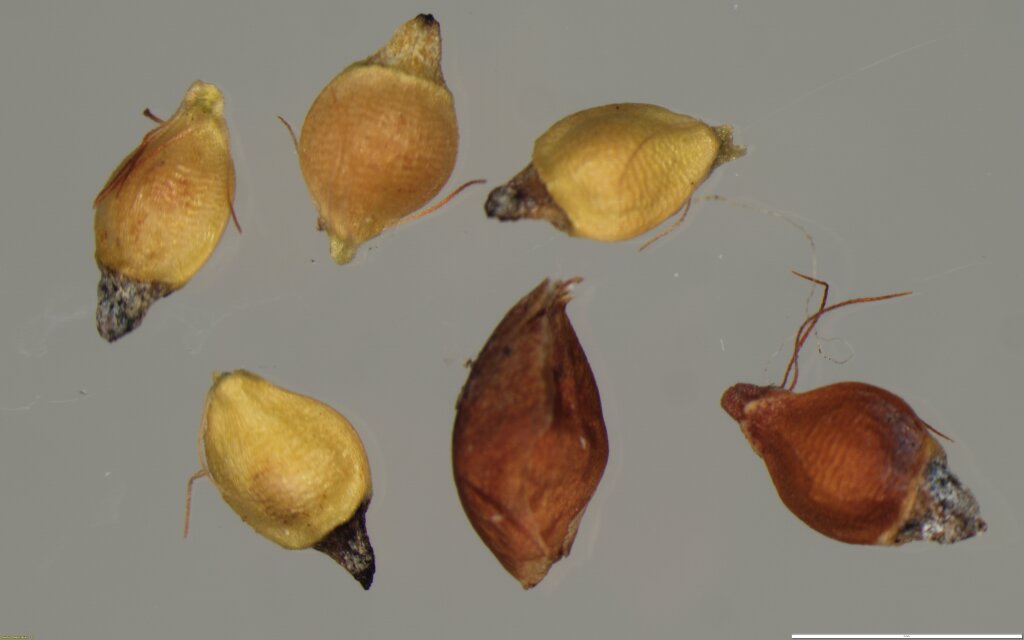Rhynchospora brownii
Roem. & Schult. Grassy Beak-rushSlender, shortly rhizomatous perennial. Culms trigonous, smooth or slightly scabrous above, noded, mostly 30–80 cm long, c. 1.5 mm diam. Leaves basal and cauline, flat or channelled, 2–5 mm wide. Inflorescence panicle-like, narrow, consisting of 3–6 distant, dense to rather loose partial inflorescences with branches very unequal; involucral bracts equal to the partial inflorescence in their axils or longer and reaching the next higher node. Spikelets terete, 2–3-flowered, 3–6 mm long; flowers bisexual, upper one(s) often aborted; glumes 5–8, spirally arranged, acute, short-mucronate, red-brown, glabrous, 3–4 mm long; hypogynous bristles 5 or 6, from slightly shorter to longer than the nut. Stamens (1–)2(–3); style 2-fid; style-base conical, glabrous, half as long to about as long as and almost as wide as nut. Nut obovoid to broadly obovoid, dorsiventrally compressed, finely transversely wrinkled (with cells longitudinally oblong), pale to dark red-brown, body 1.5–2 mm long, 1–1.7 mm wide. Flowers spring.
VRiv, NIS, HNF. Also NT, Qld, NSW. Africa, Asia, Malesia. Very rare in Victoria and known only from a few low-altitude Sphagnum bogs in north-east Victoria in the Kiewa, Ovens and King valleys (Tawonga, Happy Valley and Whitfield respectively), but not recorded from Happy Valley since 1938.
May be better treated as part of the polymorphic, pantropical species R. rugosa (Vahl) Gale.
Wilson, K.L. (1994). Cyperaceae. In: Walsh, N.G.; Entwisle, T.J., Flora of Victoria Vol. 2, Ferns and Allied Plants, Conifers and Monocotyledons, pp. 238–356. Inkata Press, Melbourne.
 Spinning
Spinning

